For this week’s blog diary we’ll be visiting the rock garden, pond, greenhouse and new exotic garden. It’s quite a mixed bag but by accident I seem to gave chosen six plants linked by the letter P.
Phyllocladus alpinus ‘Highland Lass’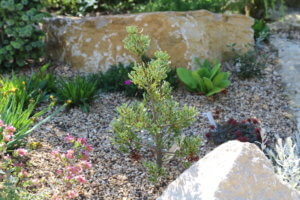
This is a really unusual conifer from New Zealand. Phyllocladus is its latin name but it has the common names Toatoa and Mountain Celery Pine. I bought it from my local garden centre on impulse as I thought it would look good in the rock garden, its branching tree-like shape adding a contrast to the hummocky alpine plants that surround it.
A friend from New Zealand visited and spotted it straight away. She also has it in her garden but mentioned that this is the female variety and that she also has the male form Phyllocladus alpinus ‘Highlander’. 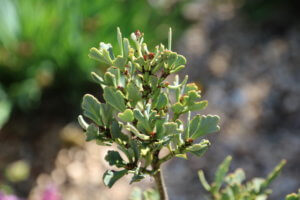
In what seems a very romantic scenario her male and female forms are planted alongside each other which means she may soon see tiny red globe-shaped cones develop. I’m now searching for a Highlander to join my lassie in the rock garden.
Exotic Potato relative – Solanum lancifolium
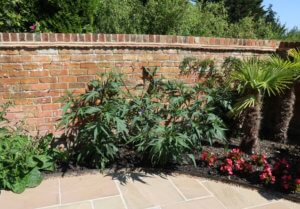
If I told you these four plants were grown from seed sown in February would you believe me? These are supercharged annuals for sure.
These were seeds sourced from Mike’s Rare Plants. Mike grows an incredible range of exotic and tropical plants in his garden and sells excess seeds through Facebook. He’s also on Twitter and Instagram.
I’ve bought seeds from him for the last two years and I like to try something new. This turned out to be a great choice. I really like the lance shaped dark green leaves and the large purple flowers. Being part of the same family as potatoes, the flowers are very potato-like but much much larger.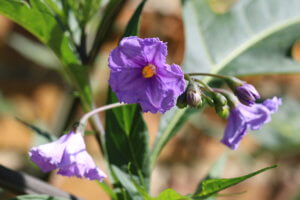
Pond Lobelia – Lobelia vedrariensis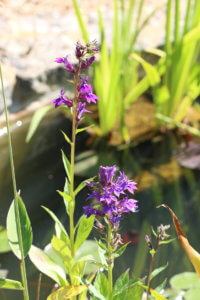
My newish pond continues to do really well and is now completely clear and fully balanced. This has been achieved with patience and zero intervention on my part save for putting in lots of plants. I’ve moved the water lilies down gradually and they are now almost at the bottom and flower regularly.
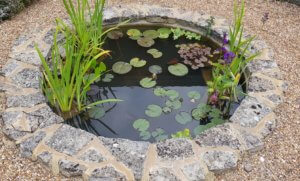
On the shelves at the edges I have several baskets with marginals including this very pretty lobelia. It is still in the pond basket it was supplied in and will soon need a repot. I have just read online that this plant is often used in wetland reconstruction projects to help improve water quality so maybe it’s in part responsibility for the pond’s clarity. It also appears to be a good attractor of pollinators, as evidenced by this picture of a bumble bee seeking out nectar. 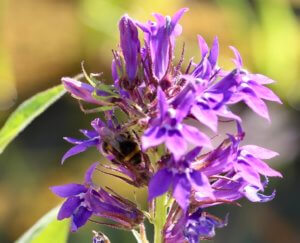
Passiflora ‘Marijke’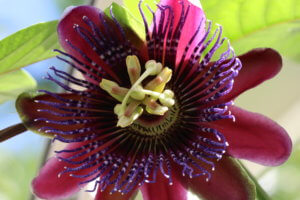
Here’s a passionflower on which I have a major crush. The flowers are so bizarre as a whole but the strangest element has to be the white-striped purple filaments. They must surely give a come hither sign to some exotic pollinating insects.
I keep this plant in a pot in the winter-heated section of the greenhouse It’s very slow to get going in the spring and each year I worry about its survival. Then suddenly it puts on a spurt and it’s now making a bid to take over this corner.
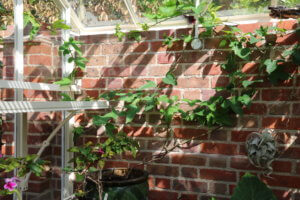
Pineapple Lily – Eucomis
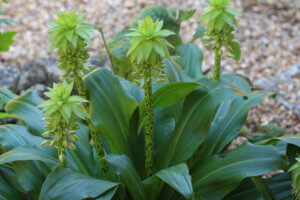
The name of this plant is spot on as the flowers do have an air of the pineapple about them. It has so much more to offer than the flowers though, the most notable being the leopard-like spots on the stems. Not to mention the glossy ribbed leaves. This clump has been growing in the pond garden for a few years but I will be moving it to the new exotic border in the autumn.
Pelargonium ‘Mini Czech’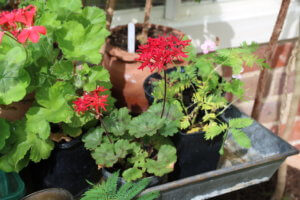
This is a cutting from a larger plant taken in spring and it’s growing very well. I really like the flowers in this one, not only because the red colour is so vibrant but also because each flower head looks like a sparse cheer-leaders’ pompom. Amassed in a compound flower they look prettily frilly.
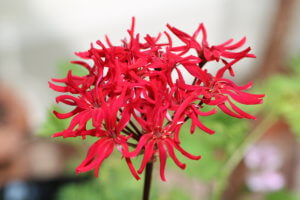
This seasonal diary is part of a weekly link-up of garden bloggers from around the world, called Six on Saturday. For more information and links to other blogs crammed with gardening activity, check the blog of host The Propagator.
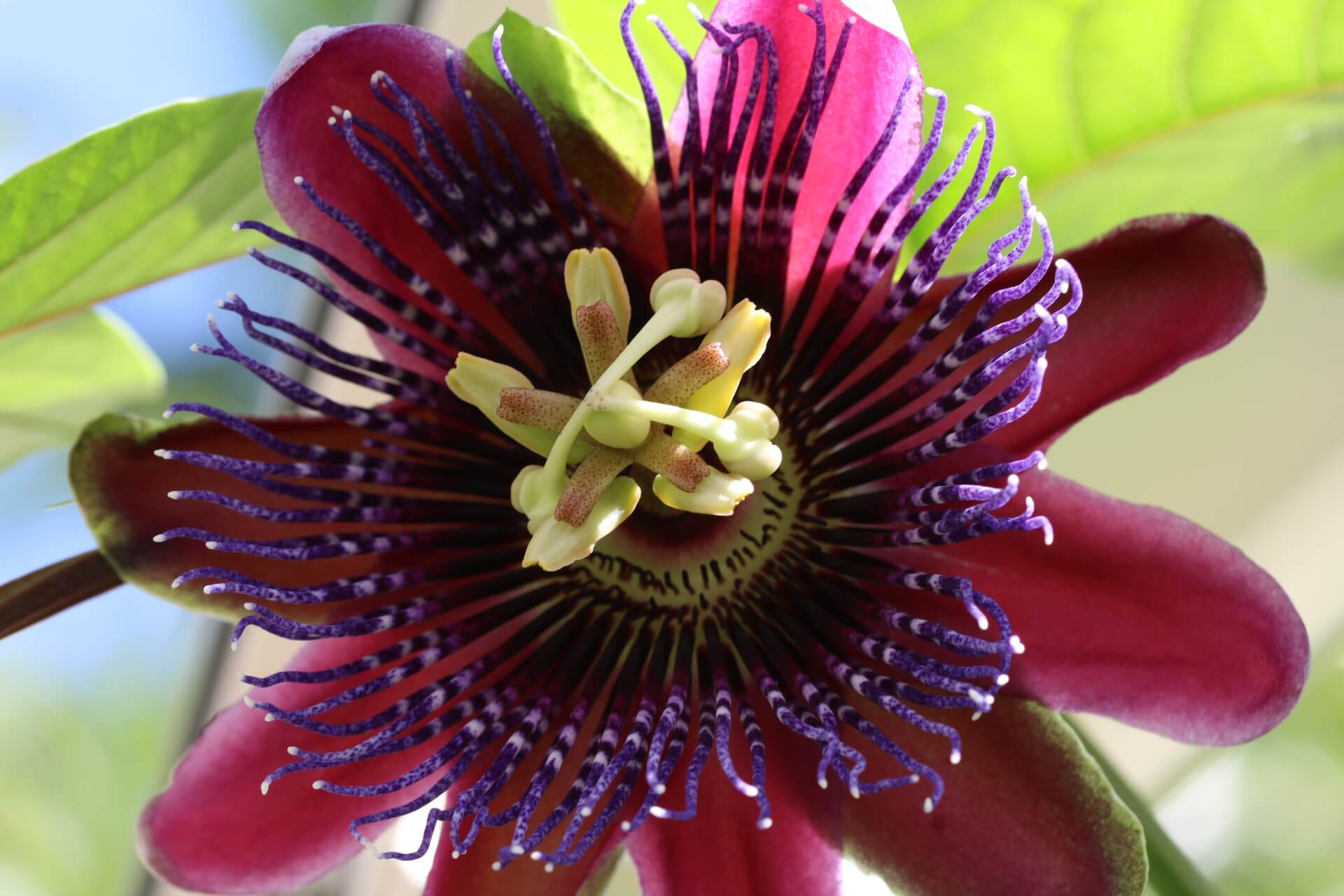
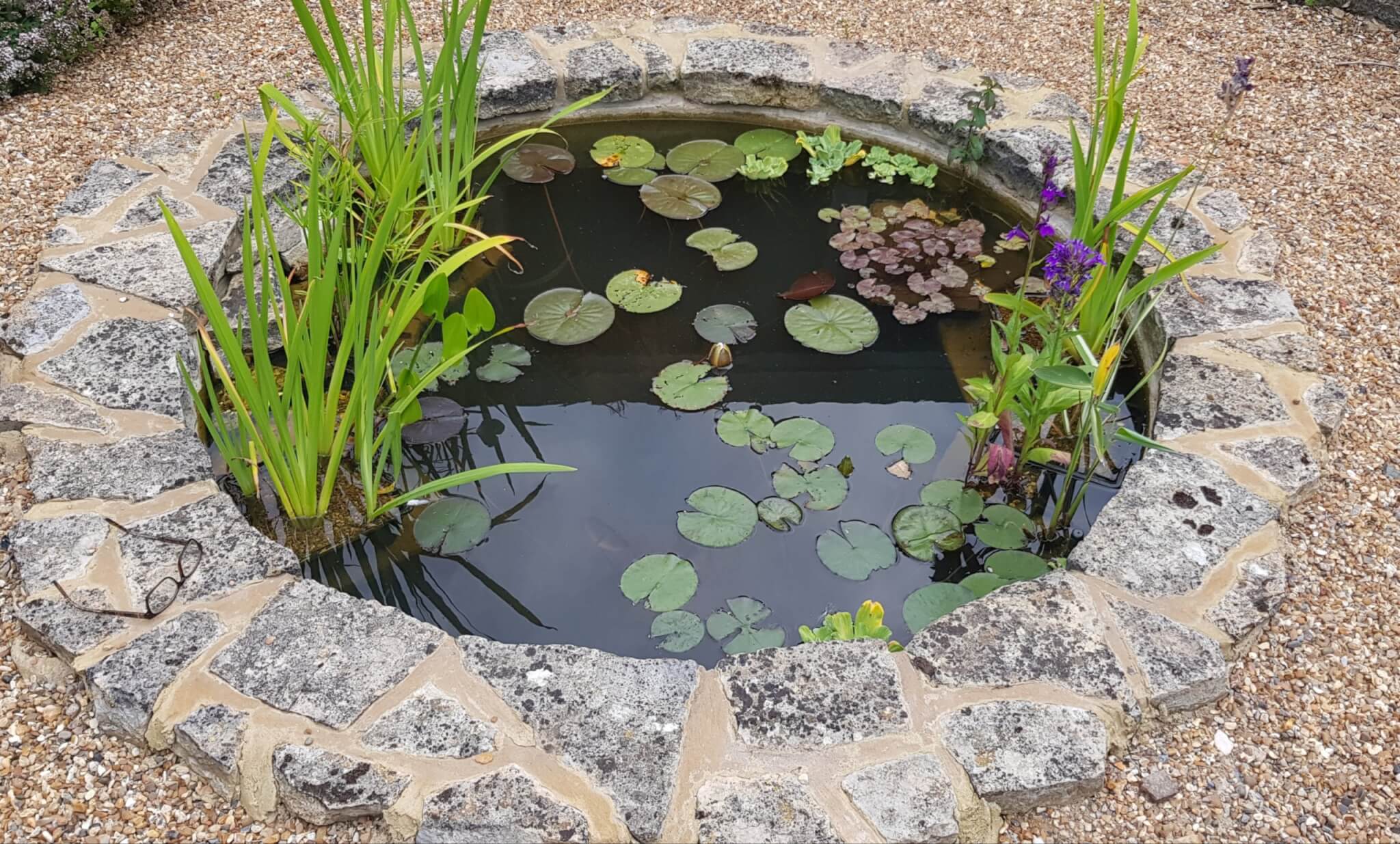
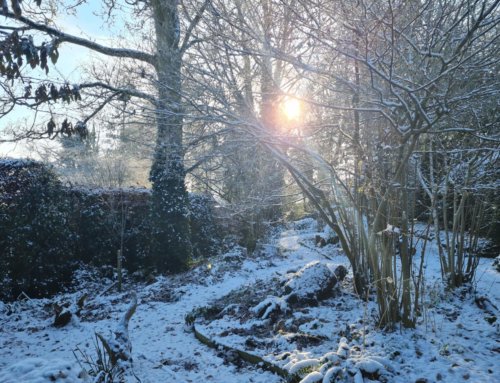
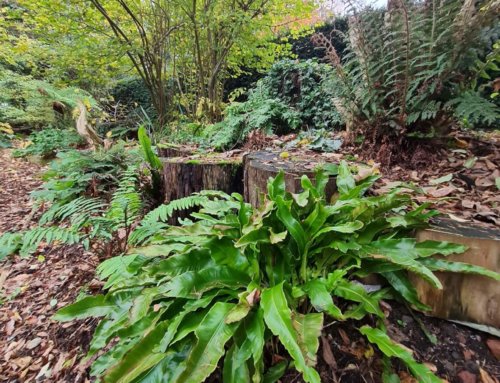
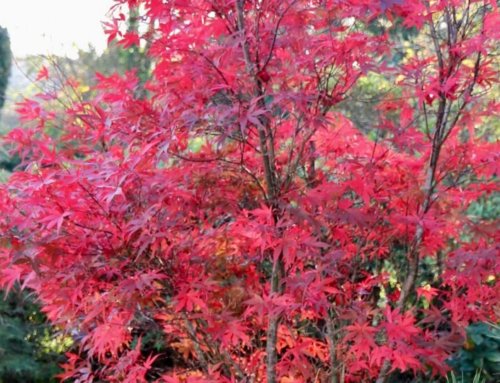
Your pond is a success! The water looks clear and the result is superb. Did you put a fish in it? Do you filter or change the water?
Otherwise Mike has a lot of wonderful plants and this has given you a beautiful exotic border.
Hi Fred, there is no pond filter but despite being fairly small it is deep (1.5 metres) which I think helps. I’ve topped it up every now and again with rainwater from the water butt. I was tempted by fish but was worried about herons! Mike’s plant selections are so interesting. This solanum is one I’ll grow again.
The Pond Lobelia is lovely. I’m on the look out for something to replace a water buttercup of sorts that has got far too large for my tiny pond. I’ll add the Lobelia to the shortlist and look it up later. Wow to the passionflower!
The lobelia is a success for sure. Well worth it I’d say.
The deep passionflower is astounding! A large pond here does its own thing naturally, and other than an early spring algae occurrence, things balance out to allow flora and fauna to thrive. Congrats on your success!
Thanks March. I’m so pleased how it’s turned out, being my first pond. It’s a learning curve but that’s why I enjoy gardening.
Loving the Pelargonium Mini Czech such a vibrant colour. The passionflower is wonderful as well. Hope all is well
Hi Paul. All is well here. I tidied the greenhouse today and the passionflower continues to flower well. It’s a cracker.
Phenomenal P themed plant selection. The passion flower is stunning looking. I hope you find your Highlander as I find the thought of miniature cones irresistible.
Still looking. I ordered one but it turns out the nursery had just sold out. Some of my Alpine Garden Society chums are keeping a look out too!